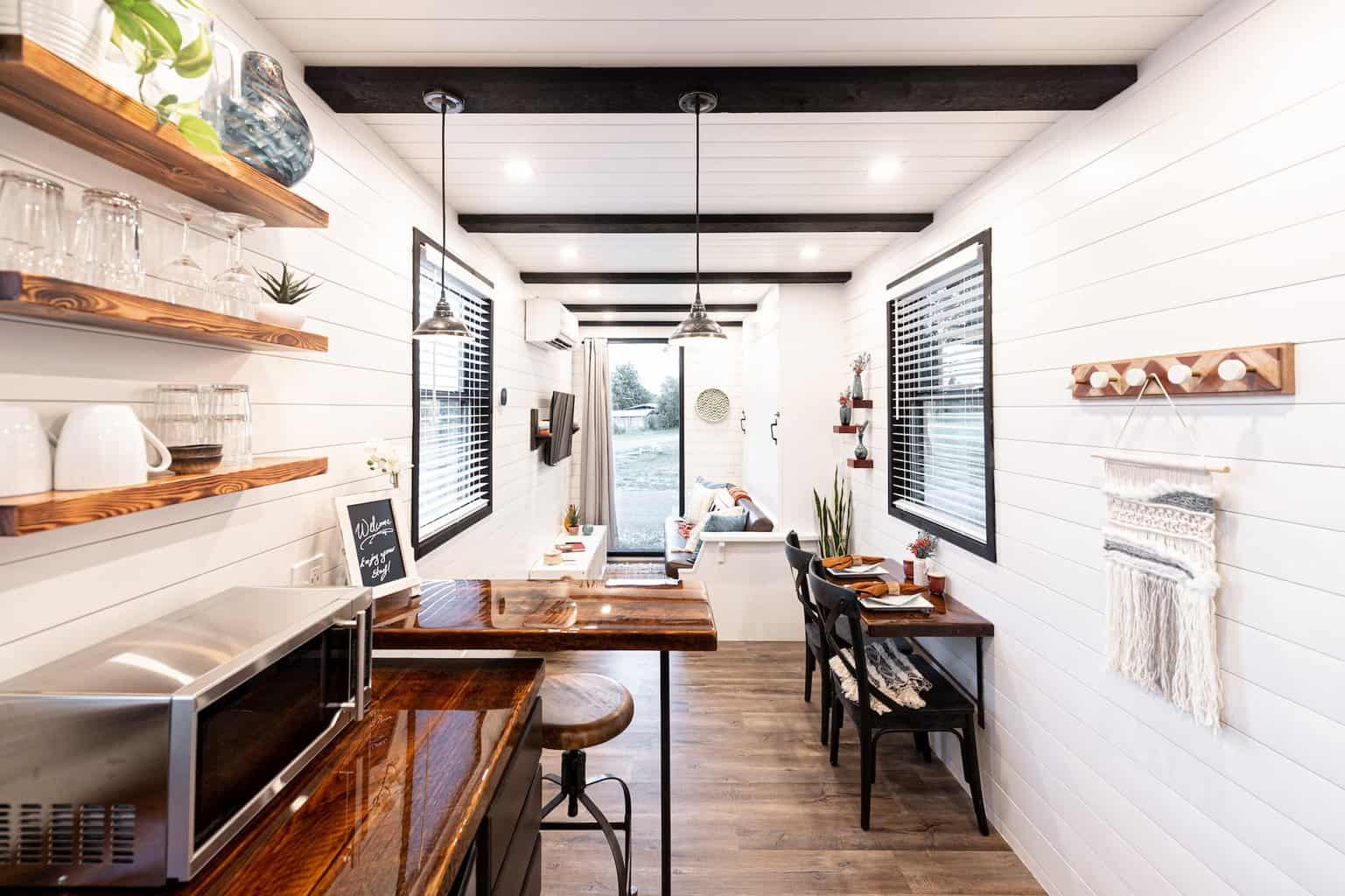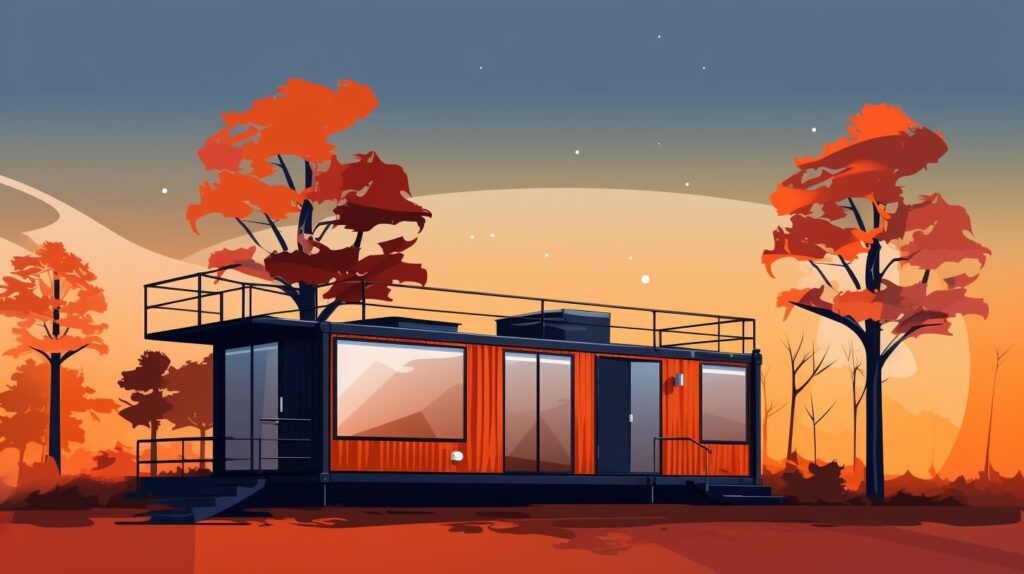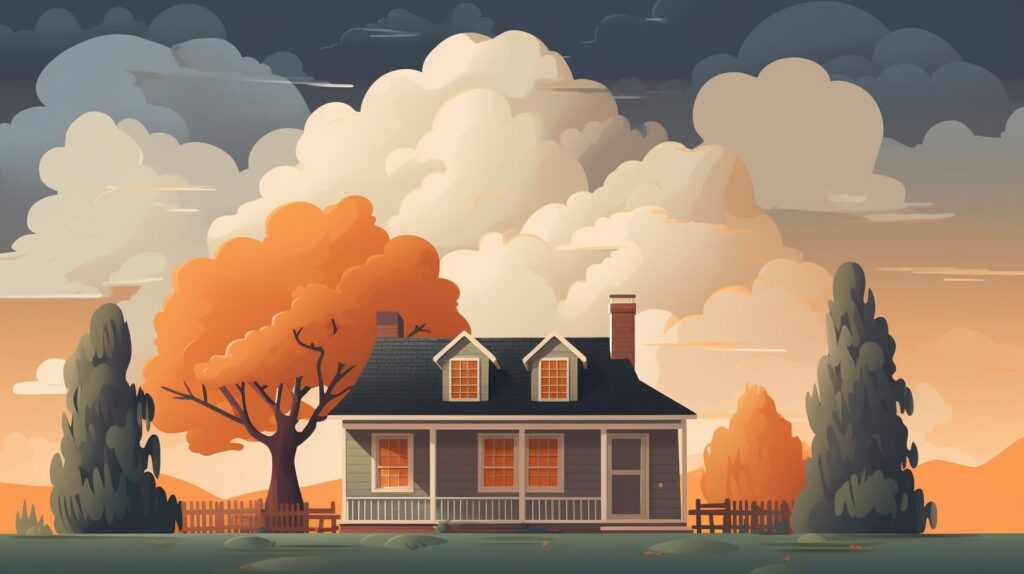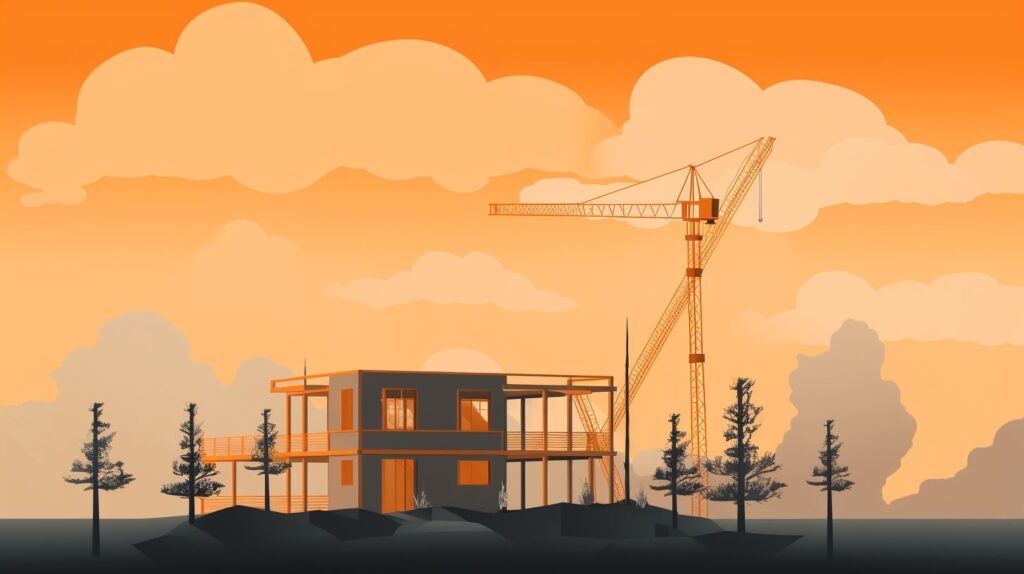
We are reader-supported. When you buy through links on our site, we may earn an affiliate commission.
People continue to seek ways to ease the housing crisis in America. One relatively new technology involves modular home construction
Builders complete anywhere from 80% to 90% of modular home construction in a factory. They then ship the components and erect them on the site. They shouldn’t be confused with manufactured homes that come complete and are treated as vehicles. Rather, these are more similar to site-built homes in terms of longevity and resale value.
This style of construction offers multiple advantages. However, it has its drawbacks like anything. If you’re considering investing, contemplate these eight pros and cons of a modular home.
1. Weather Won’t Cause Delays
Site-built homes have to battle the elements during the construction process. This process can lead to costly delays and the need to replace materials. For example, erected studs may warp in rain that continues too long, causing builders time and money to reconstruct the frame.
Conversely, modular construction takes place in a climate-controlled factory. Therefore, you don’t need to worry about a hurricane destroying your hard work.
However, what about the sturdiness of your modular home once erected onsite? Unlike manufactured homes, which sit upon a temporary foundation, modular homes are permanently affixed, the same as a site-built home. Therefore, you don’t have to worry about leakage between the floorboards or foundation. They’re also built to all local codes, so you don’t have to worry about a stiff wind blowing your home off-kilter if you live in Hurricane Alley.
2. Improved Quality Control
It doesn’t matter where construction crews labor — they’ll give their all to create a quality product. However, ask yourself this: How well do you do your best work when overheated or shivering in an uncomfortable environment? People are human, and environmental conditions distract you from the task at hand. The comfortable, climate-controlled conditions of factory build inspire higher attention to detail.
Furthermore, modular builds maintain material integrity. While a similar site-built home may start with the same initial 2x6s and joists, exposure to the elements causes warpage and potential mold that threatens structural integrity.
3. Less Expensive Than a Stick-Built Home
The current housing crisis centers around home prices far exceeding what the average person can afford on their income. Anything that can shave costs benefits consumers — who still need to factor their parcel’s expense into the final purchase equation.
The average site-built home costs anywhere from $150 to $250 per square foot. Conversely, a similar modular model rings in at $50 to $250. Luxury modular homes can get as pricey as their cousins, but you can save a considerable sum if you stay on the low end. Remember, your modular home functions the same as site-built once erected, meaning you can always build an addition or extras like decks and patios later as you save the money.
4. Speedier Move-In Time
Are you in a hurry to get into your home? If so, modular is the way to go. Think back to what you learned in school about Henry Ford and his time-saving assembly line process. Modular homes operate on similar principles, meaning crews become extremely efficient in rolling components off the line.
Furthermore, have we mentioned not having to deal with weather delays? Not battling the elements also saves precious hours.
5. Finding Financing Poses Challenges
It’s a bit more challenging to get a loan for a modular home. That’s because traditional mortgage lenders already have the constructed property to assess for value to ensure they don’t get the bad end of the bargain if things go south.
Therefore, you’ll need to obtain a construction loan while builders erect your home. You can find these through the FHA, VA or private lenders. However, the credit score requirement differs. While lenders only require a 580 credit score for some traditional mortgage programs, they demand a 620 score for construction because of the higher risk.
6. Need a Suitable Site
Some modular home shoppers get excited about plan prices and even begin considering more house than they can chew. However, you still need a property to place your new home, and land in some areas costs an outrageous sum.
However, you can find suitable sites, especially if you look beyond established city centers. You can still find rural land relatively cheap in some areas, although you’ll have to factor in the costs of having utilities run if your parcel lacks them.
7. Limited Customization Availability
Site-built homes offer infinite customization potential. Have you always dreamed of a cupola where you could practice yoga facing the sunrise or sunset? Honey, get your mat ready.
Although modular homes are customizable, you have limited options due to the assembly-line nature of construction. Furthermore, once your builder completes specific components, you often can’t make changes without starting the entire project over — and incurring said costs.
8. Public Perception and Resale
Modular home construction is comparable, if not superior, to site-built homes in many aspects. However, public perception is slow to change.
These builds are indistinguishable from site-built homes, and most residents find that their property value increases over time as it would with a traditional model. However, you need to have a buyer when it comes time to sell, and you must disclose all material conditions of the property. Therefore, this construction style could potentially scare off less educated homebuyers.
Pros and Cons of Modular Homes
The race is on to find affordable solutions to America’s housing crisis. Modular home construction offers one avenue, but they have their pros and cons.
Now that you understand the pros and cons of a modular home, you can make the right purchase decision for yourself. Will going modular be your ticket to welcome home?







